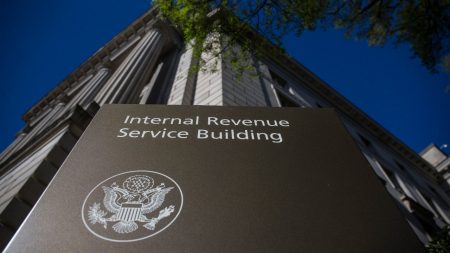Key takeaways
- There are two main types of student loans: federal and private.
- Federal student loans have unique repayment options and are the only avenue for loan forgiveness programs.
- Private student loans may offer lower interest rates for borrowers with excellent credit.
- It is important to compare options and read the fine print when considering any student loans.
The two main types of student loans are federal and private. Federal student loans do not require a minimum credit score and should be considered ahead of other funding routes once all free aid has been exhausted. Private student loans, on the other hand, may be a good fit for borrowers who need more than what federal student loans offer or for those who don’t qualify for federal loans due to citizenship status.
Student loan types: federal and private
Within the federal and private student loan categories, there are different types that suit some borrowers over others. To help you find the best type of student loan for your needs, consider the main differentiating factors of the most common loan types.
| Direct Subsidized Loan | Direct Unsubsidized Loan | Direct PLUS Loan | Private student loan | |
| Type | Federal | Federal | Federal | Private |
| Interest rate | 6.53% (2024-25) | 6.53% for undergraduates, 8.08% for graduates (2024-25) | 9.08% (2024-25) | Around 4% to 18% |
| Repayment term | Standard 10-year term | Standard 10-year term | Standard 10-year term | 5 to 25 years |
| Eligible borrowers | Undergraduates with financial need; borrowers must be a U.S. citizen or permanent resident and meet other eligibility criteria | Undergraduates and graduates; borrowers must be a U.S. citizen or permanent resident and meet other eligibility criteria | Graduates and parents; borrowers must be a U.S. citizen or permanent resident and meet other eligibility criteria | Undergraduates, graduates and parents; borrowers must have good credit and a steady income |
| Best for | Undergraduate borrowers from low-income families | Borrowers who don’t qualify for need-based aid | Graduate students who have maxed out unsubsidized loans; parents | Borrowers who have maxed out federal loans; borrowers with excellent credit |
Each student loan type has borrowing limits. For instance, the maximum you can borrow annually with a direct subsidized loan and a direct unsubsidized loan is from $5,500 up to $12,500. Graduate or professional students can borrow as much as $20,500 annually using a direct unsubsidized loan. In addition, the Department of Education allows PLUS loans to cover any remaining college costs that have not been covered by financial aid.
Types of federal student loans
While there are many ways to pay for college, federal student loans are one of the most popular options. These loans offer flexible payment options and often have low interest rates. The federal Direct Loan Program offers a few loan types.
How to get federal student loans
The Free Application for Federal Student Aid (FAFSA) application must be completed to determine how much federal aid you’re eligible to receive, including federal student loans.
Direct subsidized loans
Direct subsidized loans are available to undergraduate students who have demonstrated financial need. These loans do not accrue interest while the borrower is in school, during the six-month grace period or through any deferment period afterward. After filling out the FAFSA form, students will receive a financial aid offer letter.
Direct unsubsidized loans
Direct unsubsidized loans are available to undergraduate, graduate and professional students. Borrowers do not need to demonstrate financial need, but these loans accrue interest immediately. This means that you’ll be accruing interest during school, after you graduate and during periods of deferment and forbearance.
This finance option also requires that you fill out the FAFSA. The main difference is that borrowers are expected to pay interest.
Direct PLUS loans
Direct PLUS Loans are available to graduate or professional students or parents of dependent undergraduate students to help pay for education expenses. Direct PLUS Loans (also known as graduate PLUS loans and parent PLUS loans) carry higher interest rates and higher loan origination fees than Direct Subsidized and Unsubsidized Loans.
Unlike other federal student loans, parent PLUS loans are taken out by parents directly. While students can make payments themselves, their parents will still be legally and financially responsible for repaying the full balance of parent PLUS loans. That means the loan will show up on only the parent’s credit report, not the student’s.
All federal loans — including PLUS loans that were taken out for a student — are discharged if the borrower or student dies. This is not something private loans always offer.
Types of private student loans
Unlike federal student loans, which offer only fixed rates, private student loans can have fixed or variable interest rates. Qualified borrowers can secure low interest rates and benefit from various repayment terms, incentives and consolidation options — depending on the current rate environment. There are several types of private student loans, including undergraduate, graduate and parent loans.
Undergraduate loans
Private student loans for undergraduates often come with various repayment terms and may even give borrowers a discount on their principal once they graduate school. However, unlike federal student loans, private lenders almost always require a cosigner since undergraduates have typically not had time to develop a credit history.
Undergraduate private student loans usually have higher interest rates than graduate student loans. However, these loan options also usually have lower loan amount limits.
Graduate loans
Private student loan lenders may offer specific loan options tailored to graduate, law, medical and business school students. Private loans for graduate or professional students are less likely to require a cosigner than undergraduate loans. They often have higher loan limits, longer repayment terms, and lower interest rates.
In many cases, private graduate student loans also come with features specific to a graduate school student’s needs — for instance, some lenders offer long grace periods, in-school deferment periods and additional deferment while students complete a residency.
Parent loans
Parents can take out loans to help pay for their children’s education. Like regular student loans, parent loans come in federal and private options.
A common federal option is the parent PLUS loan. Qualifying applicants can borrow the full cost of their dependent’s attendance minus other financial assistance. There are credit and enrollment requirements for this option, but parents might also consider looking into a private student loan to see if they qualify for a better interest rate.
Which type of student loan should you choose?
There are no hard-and-fast rules for deciding which loan option is best for you. The best option comes down to your finances, preferences and risk tolerance. However, as a general rule, federal student loans should be the first place you look.
Federal student loans
Federal student loans are suitable for every kind of qualifying borrower. They offer unique repayment options and longer deferment periods than private lenders, and they’re the only avenue for loan forgiveness programs.
They also don’t have a minimum credit score, so undergraduates can access loan funds without needing a cosigner. In general, borrowers should max out their federal student loans before taking out private loans.
Private student loans
Private student loans are best for borrowers who don’t qualify for federal student loans due to citizenship status or borrowers who need to borrow far more than what federal student loans provide. Private student loans may also be a good option for borrowers with excellent credit, since some lenders offer lower starting loan rates than the federal government.
Bottom line
A good first step when considering student loans to help finance your college education is to complete the FAFSA and find out what federal aid you may qualify for. This can help you develop the rest of your game plan for borrowing money from other sources.
If private student loans are the route to cover remaining costs, carefully compare the best student loan rates to find the most competitive option before applying to get a student loan.
Read the full article here









